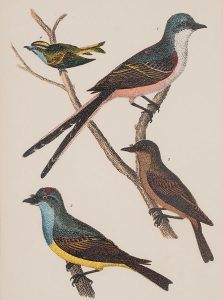1799, Philadelphia, Pennsylvania – 1885, Philadelphia, Pennsylvania
View artwork
Titian Ramsay was the youngest son of one of the most important figures in early American art, the painter and museologist Charles Willson Peale. Trained by his father as an artist and naturalist, Titian also studied anatomy at the University of Pennsylvania, where he made drawings of the specimens in the University’s collections. In 1818, he accompanied an expedition to Florida to provide a record of the flora and fauna found there. As a member of Stephen Long’s expedition along the South Platte River in 1819-20, Peale traveled in the capacity of assistant to the expedition’s official naturalist, Thomas Say. His specific assignment was to collect and record specimens of birds, mammals, reptiles, fishes, and insects. His sketches, numbering over one hundred, also included some landscapes and views of Indian life. Approximately fifty of these drawings are now in the collection of the American Philosophical Society in Philadelphia. Among the expedition’s personnel, he became a skilled huntsman, in addition to his activities as a recorder. The expedition was directed to discover the source of the Platte River with a return by way of the Arkansas and Red Rivers to the Mississippi. Although they did not reach the source of the Platte, they did climb Pikes Peak, becoming the first official group to do so.










